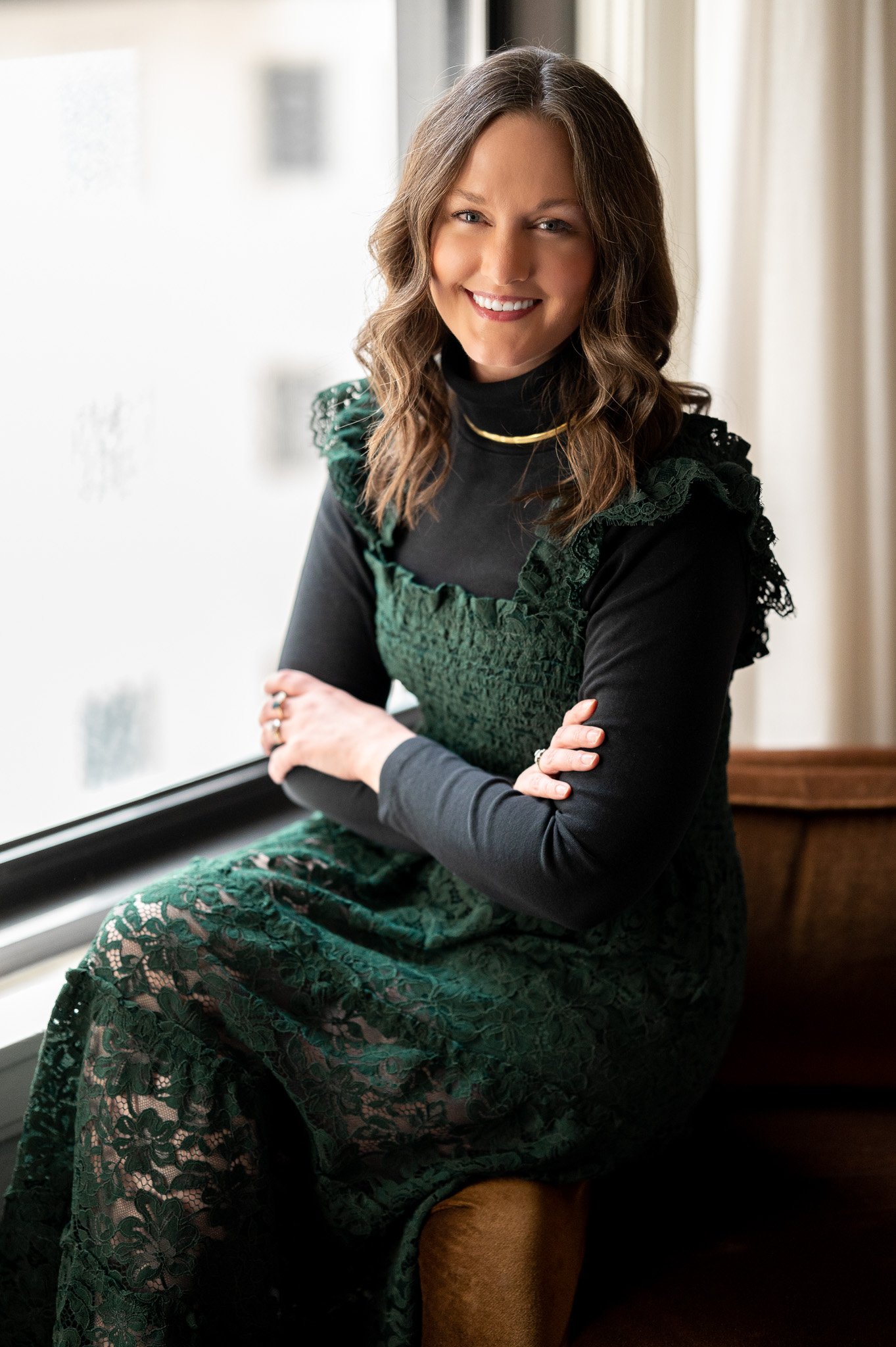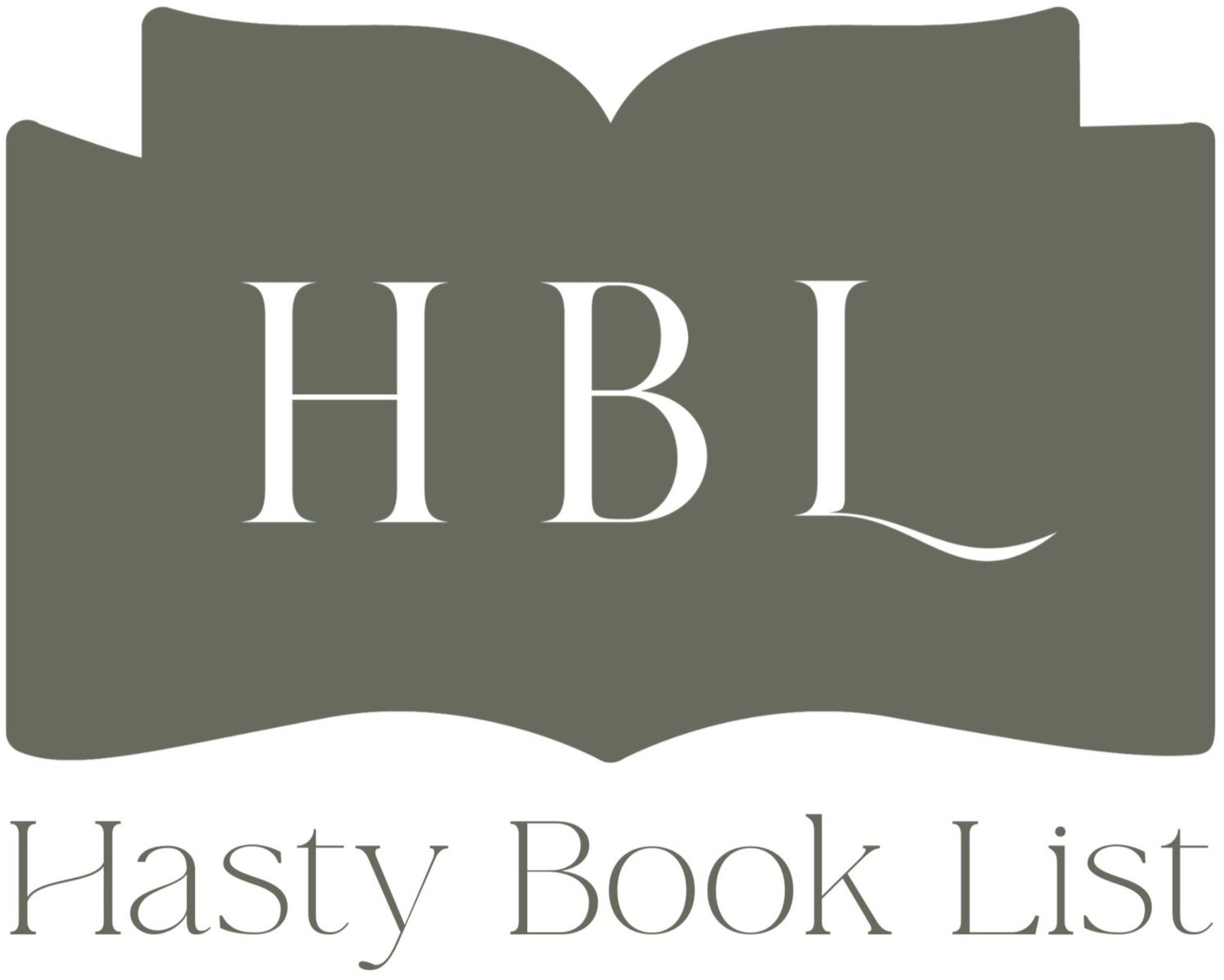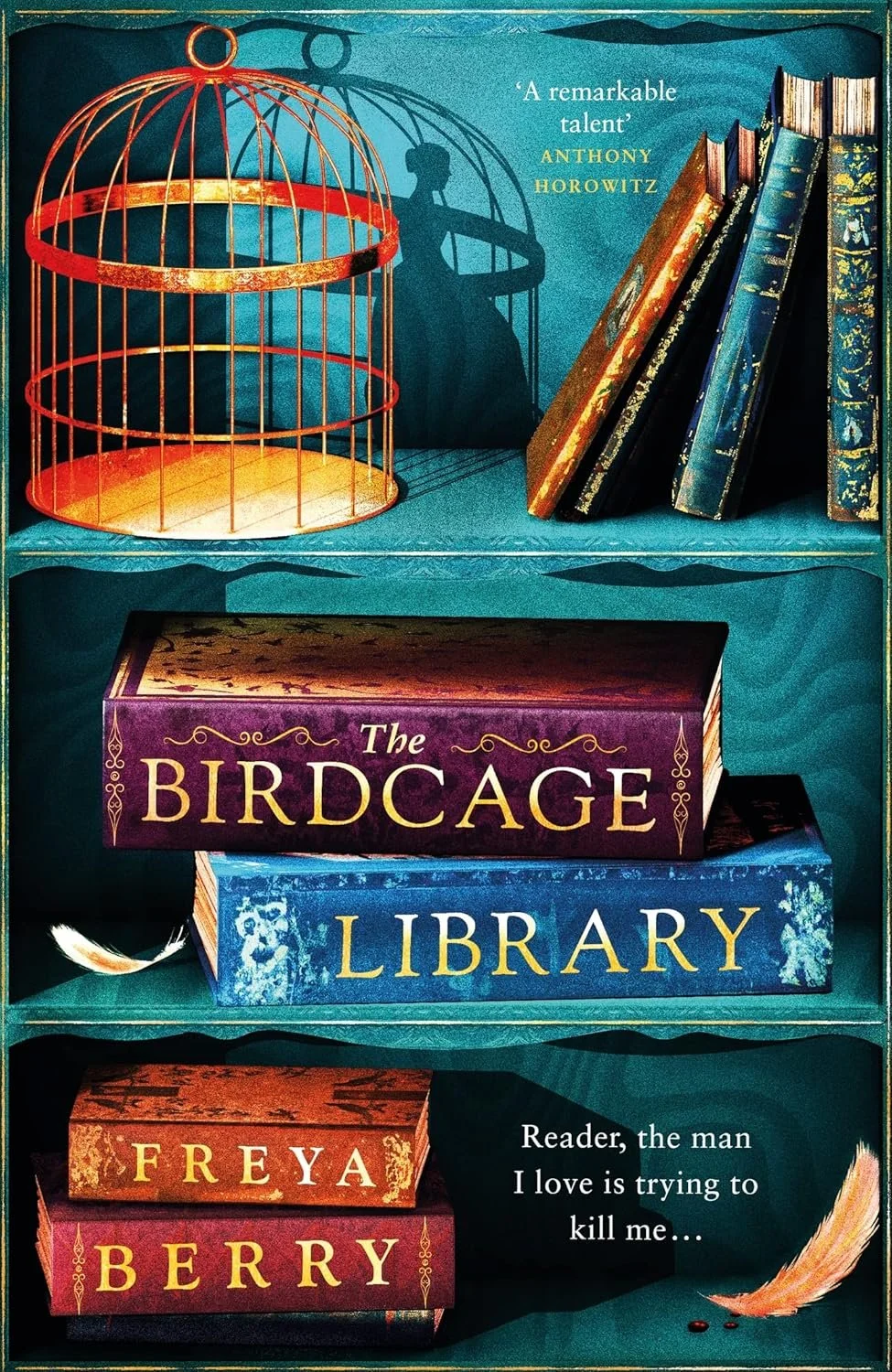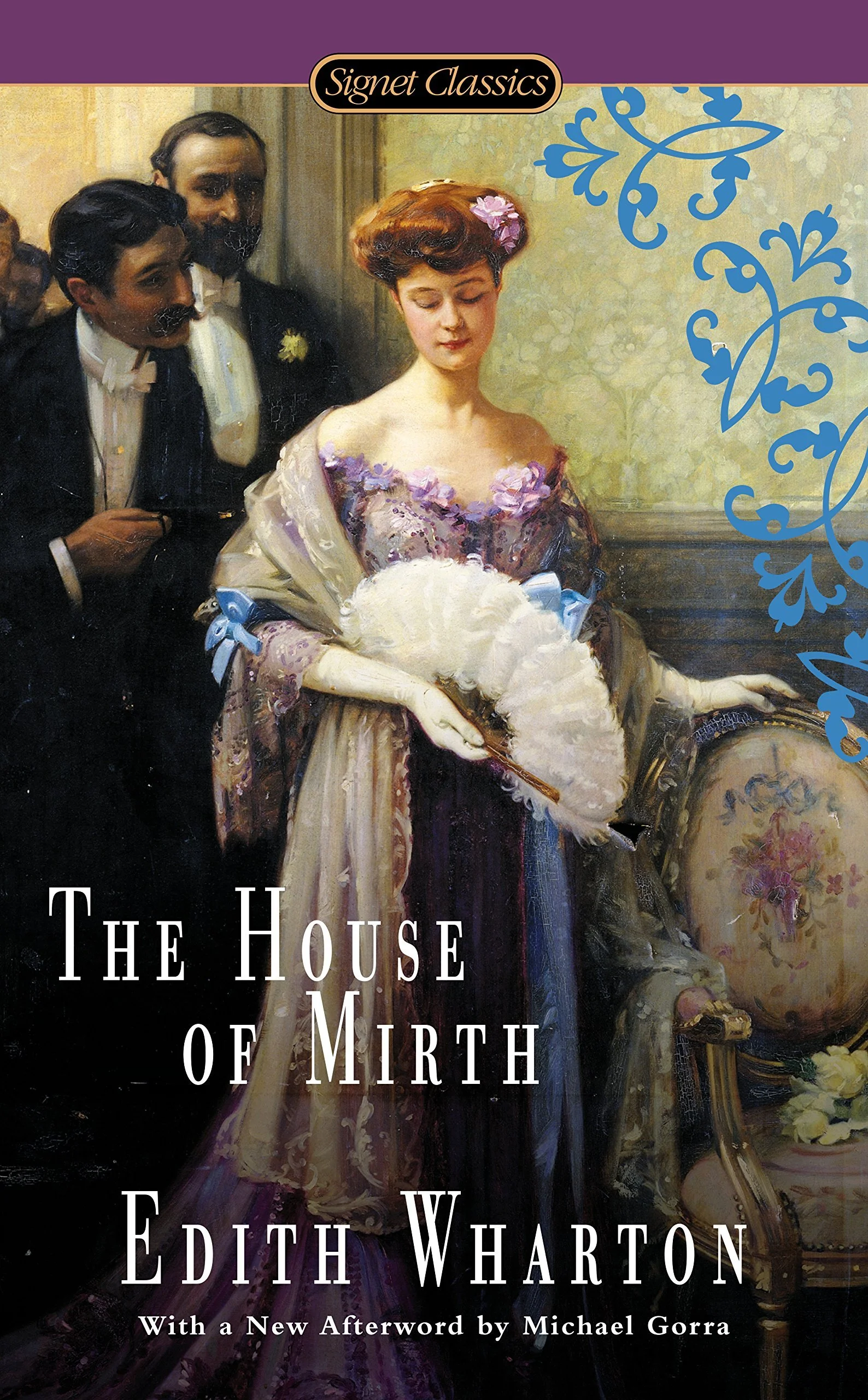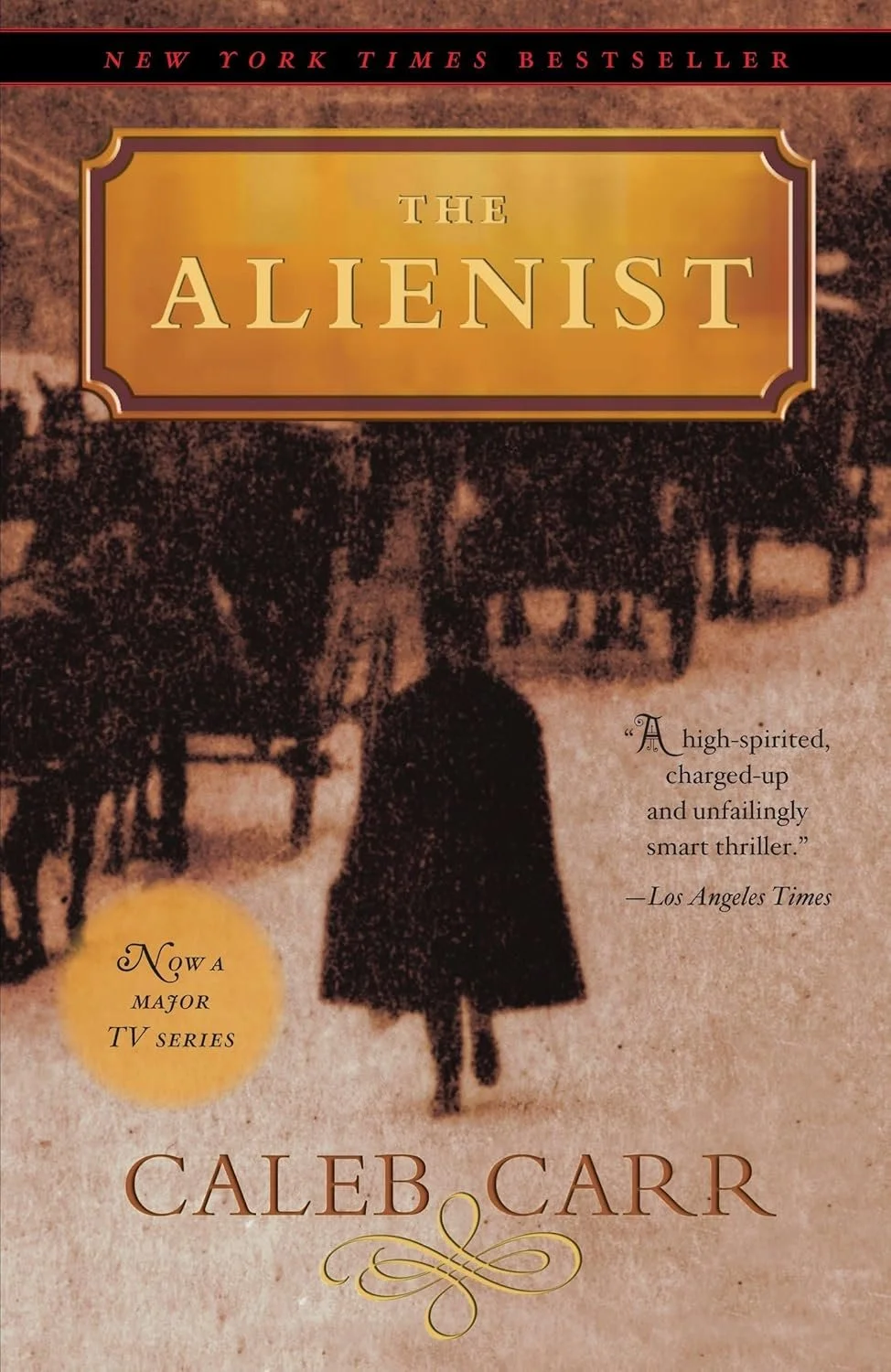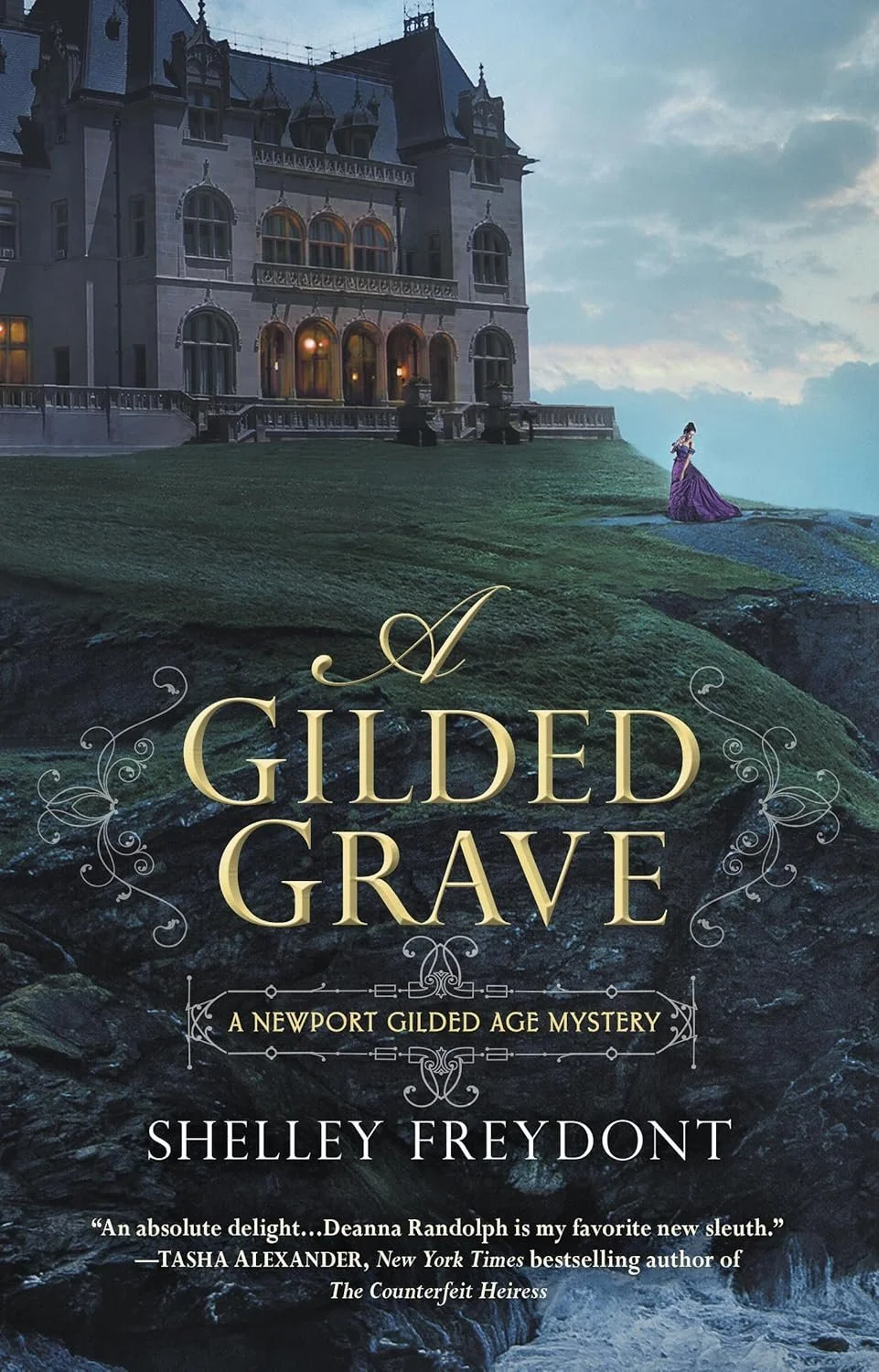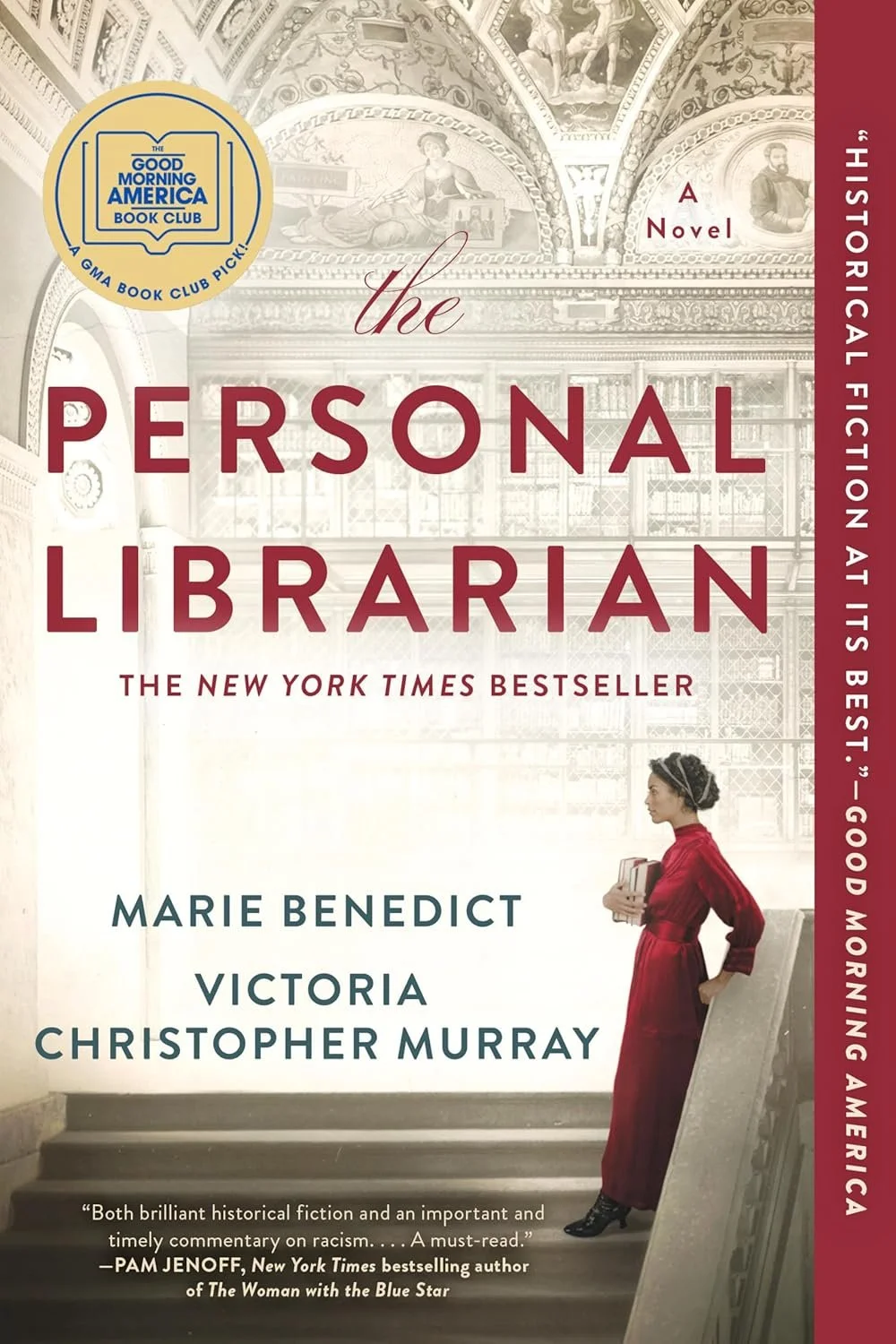Novels About The Gilded Age
The Gilded Age. A phrase that conjures images of opulent mansions, extravagant balls, and the burgeoning skylines of New York City. Yet, beneath the shimmering surface of this era lay a stark reality of profound inequality, rampant political corruption, and the desperate struggles of a burgeoning working class. It was a time of unprecedented wealth, yes, but also of crushing poverty, where fortunes were made and lost in the blink of an eye. This dramatic juxtaposition, this clash of extremes, makes the Gilded Age an endlessly fascinating period of American history.
It's no wonder, then, that countless authors have drawn inspiration from this tumultuous time. From the grand drawing rooms of Fifth Avenue to the smoky backrooms of political power, the Gilded Age provides a rich tapestry of stories waiting to be told. Today, I'm excited to delve into a selection of novels that capture the essence of this era, exploring its complexities, its contradictions, and the lives of those who navigated its dazzling, often treacherous, landscape. Whether you’re a history buff, a lover of classic literature, or simply someone captivated by tales of ambition and social change, you’re sure to find something to pique your interest. Let’s journey back to the Gilded Age, one compelling story at a time.
I want to note that I do not get paid to do these posts, I just love authors and the book industry. However, they do take time and energy to create. If you want to donate a few dollars to my coffee fund, which keeps this blog going, you can do so here: https://venmo.com/AshleyHasty or here: http://paypal.me/hastybooklist.
Novels About The Gilded Age
But what exactly was the Gilded Age? More than just a period of lavish parties, it was a pivotal moment in American history, roughly spanning from the 1870s to the early 1900s. It was a time of rapid industrialization, fueled by technological innovation and the rise of powerful industrialists. This surge in wealth, however, was not distributed evenly, creating a stark divide between the haves and have-nots. The political landscape was riddled with corruption, and social issues like labor rights and immigration were at the forefront of public discourse. This complex interplay of wealth, power, and social tension makes the Gilded Age a truly compelling subject.
Reading novels set in this era offers a unique and immersive way to experience its realities. By stepping into the shoes of fictional characters, we can gain a deeper understanding of the social customs, the economic pressures, and the moral dilemmas that defined the time. These stories can transport us to the grand ballrooms and the crowded tenements, allowing us to witness firsthand the contrasts that made the Gilded Age so remarkable. Through the lens of fiction, we can explore the human side of history, connecting with the hopes, dreams, and struggles of those who lived through this transformative period. It’s a journey into the past that is both enlightening and deeply engaging.
If you’re interested in historical fiction, you might be interested in this post on who are the best historical fiction authors and this one on top historical fiction books or this one on Books Through the Decades.
What Novels Are Set In The Gilded Age?
The Gilded Heiress by Joanna Shupe
From USA Today bestselling author Joanna Shupe comes a spicy Anastasia story full of secrets and betrayal, set among the glittering streets of New York City's Gilded Age.
In 1880 a baby was stolen from the wealthiest family in America. Though no ransom was ever demanded, the Pendelton family never gave up hope . . . and their reward became the stuff of legend.
After being raised in a children’s asylum, Josie Smith ends up on the streets and quickly learns how to take care of herself. Her singing voice draws crowds on every corner, and she’ll stop at nothing to become famous and travel the world, loved and adored by all. Maybe then she won’t think about the family who gave her away as an infant.
Leo Hardy isn’t afraid to use his charm and wits to make a fast buck, especially with a mother and five siblings to support. When he stumbles upon a beautiful young woman singing on the street, Leo notices her striking resemblance to the infamous missing baby’s mother, Mrs. Thomas Pendelton. The Hardys lost everything thanks to the Pendeltons, and once Leo sees Josie, he seizes the opportunity to settle the score. All he needs to do is pull off the biggest swindle of his career.
As the two are catapulted into Knickerbocker High Society, they grow closer to their goal, as well as to each other. But secrets can only stay hidden for so long. Soon the truth unfolds, and both Josie and Leo must separate what’s real from what’s just gilding.
The Birdcage Library by Freya Berry
Spanning Gilded Age New York society to the 1930s Scottish Highlands, this gothic novel is a mystery within a mystery, featuring a compelling heroine, an engrossing puzzle with fiendish clues, and not one but three big twists.
It’s 1932: Scottish adventuress and plant-hunter (and surviving twin) Emily Blackwood, now living in Australia, accepts a commission from Heinrich Vogel, a former dealer of exotic animals in Manhattan. Vogel now lives with his macabre collection of taxidermy in a remote Scottish castle. Emily is tasked with finding a long-lost treasure that Heinrich believes has been hidden within the castle walls. But instead, she discovers the pages of a diary written by Hester Vogel, who died after falling from the Brooklyn Bridge on the eve of its opening in 1883. Hester's diary leads Emily to an old book, The Birdcage Library, and into a treasure hunt of another kind—one that will take her down a dangerous path for clues, and force her to confront her own darkest secret . . .
The Colony Club by Shelley Noble
From New York Times bestselling author Shelley Noble comes a thrilling historical novel about the inception of the Colony Club, the first women’s club of its kind, set against the dazzling backdrop of Gilded Age New York.
When young Gilded Age society matron Daisy Harriman is refused a room at the Waldorf because they don’t cater to unaccompanied females, she takes matters into her own hands. She establishes the Colony Club, the first women’s club in Manhattan, where visiting women can stay overnight and dine with their friends; where they can discuss new ideas, take on social issues, and make their voices heard. She hires the most sought-after architect in New York, Stanford White, to design the clubhouse.
As “the best dressed actress on the Rialto” Elsie de Wolfe has an eye for décor, but her career is stagnating. So when White asks her to design the clubhouse interiors, she jumps at the chance and the opportunity to add a woman’s touch. He promises to send her an assistant, a young woman he’s hired as a draftsman.
Raised in the Lower East Side tenements, Nora Bromely is determined to become an architect in spite of hostility and sabotage from her male colleagues. She is disappointed and angry when White “foists” her off on this new women’s club project.
But when White is murdered and the ensuing Trial of the Century discloses the architect’s scandalous personal life, fearful backers begin to withdraw their support. It’s questionable whether the club will survive long enough to open.
Daisy, Elsie, and Nora have nothing in common but their determination to carry on. But to do so, they must overcome not only society’s mores but their own prejudices about women, wealth, and each other. Together they strive to transform Daisy’s dream of the Colony Club into a reality, a place that will nurture social justice and ensure the work of the women who earned the nickname “Mink Brigade” far into the future.
The Winthrop Agreement by Alice Sherman Simpson
A captivating historical novel set in Gilded Age New York City about an immigrant daughter’s ascent from a miserable tenement to the heights of haute couture, driven by an insatiable hunger for a place in society and secrets she must not betray.
When Rivkah Milmanovitch arrives at Ellis Island, her husband is not waiting for her as promised. Alone and pregnant, she makes her way to the Lower East Side tenement of an old friend. Lottie Aarons, whose husband went out for a newspaper and never returned, takes Rivkah in and they work side-by-side in dispiriting sweatshops. Rivkah gives birth to a daughter, Mimi, determined that her child will have a better life in America.
Frederick Winthrop, slum landlord, lives in one of Fifth Avenue‘s sumptuous mansions—and preys on young girls. When he serendipitously meets fifteen-year-oldMimi, who dreams of silks, satins and velvets, imagines costumes and ball gowns, she is easily seduced, and her life takes an unexpected turn. To avoid scandal, the Winthrop family offers Mimi a rare opportunity. While Lottie, now a bookkeeper in the employ of the Winthrops, wisely advises her, Mimi knows exactly what she wants. But as she rises to international fame, she must struggle with the secrets of her past and protect those she loves.
The Literary Undoing of Victoria Swann by Virginia Pye
Set in Gilded Age Boston, The Literary Undoing of Victoria Swann tells the story of a successful woman author of romance and adventure novels who becomes a champion of women’s rights as she takes on the literary establishment and finds her true voice, both on and off the page. Everything changes for Victoria Swann when she goes against her publisher’s expectations and abandons her frivolous writing style in favor of telling her own story. This seemingly personal decision causes her to lose her standing with her publisher, her income, and her marriage, as she joins the legions of hard-working young women who have been her most faithful readers. Her new young Harvard educated editor becomes her surprising ally as she fights on behalf of these same women, while he dares himself to become a more liberated, modern gentleman. The Literary Undoing of Victoria Swann shows how writing and reading, like all acts of defiance, can liberate us from narrow, constrained lives—and how revision in life and revision on the page are intimately entwined.
The Age of Innocence by Edith Wharton
The Age of Innocence, written by Pulitzer Prize-winning author Edith Wharton, is a classic love story set in late 19th century New York City. It tells the story of Newland Archer, a young lawyer, and his struggle between his arranged marriage to a beautiful but conventional woman and his passionate love for her cousin, the scandalous Countess Ellen Olenska. This novel explores the complexities of life in a society bound by rigid rules and expectations. Through the eyes of Newland Archer, readers gain insight into the hypocrisy, snobbery, and pretense of the Gilded Age. The Age of Innocence is a timeless classic that provides an honest, humorous, and often painful look at the human condition.
The House of Mirth by Edith Wharton
A black comedy of manners about vast wealth and a woman who can define herself only through the perceptions of others. The beautiful Lily Bart lives among the nouveaux riches of New York City – people whose millions were made in railroads, shipping, land speculation and banking. In this morally and aesthetically bankrupt world, Lily, age twenty-nine, seeks a husband who can satisfy her cravings for endless admiration and all the trappings of wealth. But her quest comes to a scandalous end when she is accused of being the mistress of a wealthy man. Exiled from her familiar world of artificial conventions, Lily finds life impossible.
For more than seventy years, Penguin has been the leading publisher of classic literature in the English-speaking world. With more than 1,700 titles, Penguin Classics represents a global bookshelf of the best works throughout history and across genres and disciplines. Readers trust the series to provide authoritative texts enhanced by introductions and notes by distinguished scholars and contemporary authors, as well as up-to-date translations by award-winning translators.
The Gilded Age: A Tale of Today by Mark Twain and Charles Dudley Warner
First published in 1873, The Gilded Age is both a biting satire and a revealing portrait of post-Civil War America-an age of corruption when crooked land speculators, ruthless bankers, and dishonest politicians voraciously took advantage of the nation's peacetime optimism. With his characteristic wit and perception, Mark Twain and his collaborator, Charles Dudley Warner, attack the greed, lust, and naivete of their own time in a work which endures as a valuable social document and one of America's most important satirical novels.
The Buccaneers by Edith Wharton
Set in the 1870s, the same period as Wharton's The Age of Innocence, The Buccaneers is about five wealthy American girls denied entry into New York Society because their parents' money is too new. At the suggestion of their clever governess, the girls sail to London, where they marry lords, earls, and dukes who find their beauty charming—and their wealth extremely useful.
The Alienist by Caleb Carr
When The Alienist was first published in 1994, it was a major phenomenon, spending six months on the New York Times bestseller list, receiving critical acclaim, and selling millions of copies. This modern classic continues to be a touchstone of historical suspense fiction for readers everywhere.
The year is 1896. The city is New York. Newspaper reporter John Schuyler Moore is summoned by his friend Dr. Laszlo Kreizler—a psychologist, or “alienist”—to view the horribly mutilated body of an adolescent boy abandoned on the unfinished Williamsburg Bridge. From there the two embark on a revolutionary effort in criminology: creating a psychological profile of the perpetrator based on the details of his crimes. Their dangerous quest takes them into the tortured past and twisted mind of a murderer who will kill again before their hunt is over.
Fast-paced and riveting, infused with historical detail, The Alienist conjures up Gilded Age New York, with its tenements and mansions, corrupt cops and flamboyant gangsters, shining opera houses and seamy gin mills. It is an age in which questioning society’s belief that all killers are born, not made, could have unexpected and fatal consequences.
The Gilded Hour by Sara Donati
The year is 1883, and in New York City, Anna Savard and her cousin Sophie—both graduates of the Woman’s Medical School—treat the city’s most vulnerable, even if doing so puts everything they’ve strived for in jeopardy...
Anna’s work has placed her in the path of four children who have lost everything, just as she herself once had. Faced with their helplessness, Anna must make an unexpected choice between holding on to the pain of her past and letting love into her life.
For Sophie, an obstetrician and the orphaned daughter of free people of color, helping a desperate young mother forces her to grapple with the oath she took as a doctor—and thrusts her and Anna into the orbit of anti-vice crusader Anthony Comstock, a dangerous man who considers himself the enemy of everything indecent and of anyone who dares to defy him.
With its vivid depictions of old New York and its enormously appealing characters, The Gilded Hour is a captivating novel by an author at the height of her powers.
A Well-Behaved Woman by Therese Anne Fowler
Book Review of A Well-Behaved Woman by Therese Anne Fowler
Author Interview with Therese Anne Fowler
Alva Smith, her southern family destitute after the Civil War, married into one of America’s great Gilded Age dynasties: the newly wealthy but socially shunned Vanderbilts. Ignored by New York’s old-money circles and determined to win respect, she designed and built nine mansions, hosted grand balls, and arranged for her daughter to marry a duke. But Alva also defied convention for women of her time, asserting power within her marriage and becoming a leader in the women's suffrage movement.
With a nod to Jane Austen and Edith Wharton, in A Well-Behaved Woman Therese Anne Fowler paints a glittering world of enormous wealth contrasted against desperate poverty, of social ambition and social scorn, of friendship and betrayal, and an unforgettable story of a remarkable woman. Meet Alva Smith Vanderbilt Belmont, living proof that history is made by those who know the rules―and how to break them.
A Gilded Grave by Shelley Freydont
In 1895, the height of the Gilded Age, the social elite spend their summers in Newport, Rhode Island. Within the walls of their fabulous “cottages,” competition for superiority is ruthless...and so are the players.
During her first Newport season, Deanna Randolph attends a ball given in honor of Lord David Manchester, a Barbadian sugar magnate, and his sister, Madeline. The Manchesters are an immediate success—along with their exotic manservant and his fortune-telling talents.
But on the nearby cliffs, a young maid lies dead—and suspicion falls on Joseph Ballard, a member of one of the town’s most prestigious families.
Joe humiliated Deanna when he rebuffed an engagement to her, but while he may be a cad, she knows he isn’t a killer. Now the reluctant allies must navigate a world of parties, tennis matches, and séances to find the real murderer. But a misstep among the glittering upper classes could leave them exposed to something far more dangerous than malicious gossip...
Birdie and Jay by Ella Joy Olsen
From the famed halls of the American Museum of Natural History to the opulent parties of Manhattan’s Gilded Age elite to a muddy dig site that may be hiding a groundbreaking discovery, Birdie & Jay is a captivating historical novel that will take you on an unforgettable journey.
Birdie, a young woman born into wealth, has a deep passion for art and science which leads her to a position painting landscape habitats at the new Museum of Natural History. Her mother - who sees this pursuit as a distraction from her daughter’s obligatory society functions - tries to forbid her from the museum, but Birdie’s dedication only grows once she meets Jay, an intelligent Irishman who’s yanked himself up by his dusty bootstraps to join the museum’s elite team of researchers.
Captivated by each other despite their class differences, Birdie and Jay steal away to Central Park each day, where they discuss the work of Darwin and other forces shaping their changing world. When the two are pulled apart for the summer - Jay to an expedition in England that could make or break his career, and Birdie to the mansions of Newport towards more acceptable suitors - both of them will have to fight for what’s right, and for a chance to be together.
A rich blend of the past, passion, and scientific truth-seeking adventure, Birdie & Jay is a powerful story that will transport listeners to an era of both extraordinary risk and glittering opportunity.
The Social Graces by Renée Rosen
Author Interview with Renée Rosen
1876. In the glittering world of Manhattan's upper crust, women are valued by their pedigree, dowry, and, most importantly, connections. They have few rights and even less independence—what they do have is society. The more celebrated the hostess, the more powerful the woman. And none is more powerful than Caroline Astor—the Mrs. Astor.
But times are changing.
Alva Vanderbilt has recently married into one of America's richest families. But what good is dizzying wealth when society refuses to acknowledge you? Alva, who knows what it is to have nothing, will do whatever it takes to have everything.
Sweeping three decades and based on true events, this is the mesmerizing story of two fascinating, complicated women going head to head, behaving badly, and discovering what’s truly at stake.
The Stranger I Wed by Harper St. George
Cora Dove and her sisters’ questionable legitimacy has been the lifelong subject of New York’s gossipmongers and a continual stain on their father’s reputation. So when the girls each receive a generous, guilt-induced dowry from their dying grandmother, the sly Mr. Hathaway vows to release their funds only if Cora and her sisters can procure suitable husbands—far from New York. For Cora, England is a fresh start. She has no delusions of love, but a husband who will respect her independence? That’s an earl worth fighting for.
Enter: Leopold Brendon, Earl of Devonworth, a no-nonsense member of Parliament whose plan to pass a Public Health bill that would provide clean water to the working class requires the backing of a wealthy wife. He just never expected to crave Cora’s touch or yearn to hear her thoughts on his campaign—or to discover that his seemingly perfect bride protects so many secrets...
But secrets have a way of bubbling to the surface, and Devonworth has a few of his own. With their pasts laid bare and Cora’s budding passion for women’s rights taking a dangerous turn, they’ll learn the true cost of losing their heart to a stranger—and that love is worth any price.
The Lost Heiress by Roseanna M. White
Brook Eden has never known where she truly belongs. Though raised in the palace of Monaco, she's British by birth and was brought to the Grimaldis under suspicious circumstances as a babe. When Brook's friend Justin uncovers the fact that Brook is likely a missing heiress from Yorkshire, Brook leaves the sun of the Mediterranean to travel to the moors of the North Sea to the estate of her supposed family.
The mystery of her mother's death haunts her, and though her father is quick to accept her, the rest of the family and the servants of Whitby Park are not. Only when Brook's life is threatened do they draw close--but their loyalty may come too late to save Brook from the same threat that led to tragedy for her mother.
As heir to a dukedom, Justin is no stranger to balancing responsibilities. When the matters of his estate force him far from Brook, the distance between them reveals that what began as friendship has grown into something much more. But how can their very different loyalties and responsibilities ever come together?
And then, for a second time, the heiress of Whitby Park is stolen away because of
the very rare treasure in her possession--and this time only the servants of Whitby can save her.
The Personal Librarian by Marie Benedict and Victoria Christopher Murray
Book Feature of The Personal Librarian by Marie Benedict and Victoria Christopher Murray
Author Interview with Marie Benedict and Victoria Christopher Murray
In her twenties, Belle da Costa Greene is hired by J. P. Morgan to curate a collection of rare manuscripts, books, and artwork for his newly built Pierpont Morgan Library. Belle becomes a fixture in New York City society and one of the most powerful people in the art and book world, known for her impeccable taste and shrewd negotiating for critical works as she helps create a world-class collection.
But Belle has a secret, one she must protect at all costs. She was born not Belle da Costa Greene but Belle Marion Greener. She is the daughter of Richard Greener, the first Black graduate of Harvard and a well-known advocate for equality. Belle’s complexion isn’t dark because of her alleged Portuguese heritage that lets her pass as white—her complexion is dark because she is African American.
The Personal Librarian tells the story of an extraordinary woman, famous for her intellect, style, and wit, and shares the lengths she must go to—for the protection of her family and her legacy—to preserve her carefully crafted white identity in the racist world in which she lives.
The Gilded Years by Karin Tanabe
Author Interview with Karin Tanabe
Since childhood, Anita Hemmings has longed to attend the country’s most exclusive school for women, Vassar College. Now, a bright, beautiful senior in the class of 1897, she is hiding a secret that would have banned her from admission: Anita is the only African-American student ever to attend Vassar. With her olive complexion and dark hair, this daughter of a janitor and descendant of slaves has successfully passed as white, but now finds herself rooming with Louise “Lottie” Taylor, the scion of one of New York’s most prominent families.
Though Anita has kept herself at a distance from her classmates, Lottie’s sphere of influence is inescapable, her energy irresistible, and the two become fast friends. Pulled into her elite world, Anita learns what it’s like to be treated as a wealthy, educated white woman—the person everyone believes her to be—and even finds herself in a heady romance with a moneyed Harvard student. It’s only when Lottie becomes infatuated with Anita’s brother, Frederick, whose skin is almost as light as his sister’s, that the situation becomes particularly perilous. And as Anita’s college graduation looms, those closest to her will be the ones to dangerously threaten her secret.
Set against the vibrant backdrop of the Gilded Age, an era when old money traditions collided with modern ideas, Tanabe has written an unputdownable and emotionally compelling story of hope, sacrifice, and betrayal—and a gripping account of how one woman dared to risk everything for the chance at a better life.
The English Wife by Lauren Willig
Book Review of The English Wife by Lauren Willig
Author Interview with Lauren Willig
Annabelle and Bayard Van Duyvil live a charmed life in New York: he’s the scion of an old Knickerbocker family, she grew up in a Tudor house in England, they had a fairytale romance in London, they have three-year-old twins on whom they dote, and he’s recreated her family home on the banks of the Hudson and named it Illyria. Yes, there are rumors that she’s having an affair with the architect, but rumors are rumors and people will gossip. But then Bayard is found dead with a knife in his chest on the night of their Twelfth Night Ball, Annabelle goes missing, presumed drowned, and the papers go mad. Bay’s sister, Janie, forms an unlikely alliance with a reporter to try to uncover the truth, convinced that Bay would never have killed his wife, that it must be a third party, but the more she learns about her brother and his wife, the more everything she thought she knew about them starts to unravel. Who were her brother and his wife, really? And why did her brother die with the name George on his lips?
Exploring books set in the Gilded Age offers an unparalleled window into a pivotal era of American history. From the satirical observations of Mark Twain and Charles Dudley Warner to the poignant social commentary of Edith Wharton's "Age of Innocence," featuring the unforgettable Newland Archer, these novels paint a vivid picture of the late 19th century and the dawn of the 20th. The stark contrasts of this time—the opulent lifestyles of robber barons like John D. Rockefeller, Andrew Carnegie, and J.P. Morgan versus the harsh realities faced by the working class—are brought to life through compelling narratives. These stories illuminate the struggles of labor unions, the rise of industrial giants, and the social anxieties that followed the Civil War.
Reading books set in the Gilded Age allows us to understand the seeds of the Progressive Era and the complexities of New York City's burgeoning society. Whether it’s a Pulitzer Prize-winning masterpiece or a more recent historical romance, each novel contributes to our understanding of the United States during this transformative time. By delving into these narratives, we gain a deeper appreciation for the social, economic, and political forces that shaped the 19th century and continue to resonate in American history today.
Gilded Age Fashion
The Gilded Age (roughly 1870s–1900) was a period of opulence, industrial growth, and stark social contrasts in the United States. This was reflected in fashion, which was extravagant, highly structured, and influenced by European styles, particularly from France and England.
Women’s Fashion
Women’s clothing during the Gilded Age emphasized luxury, wealth, and elaborate detail. Key features included:
Corsets: Created an hourglass silhouette with a cinched waist and emphasized bust and hips.
Bustle Dresses: Skirts were heavily draped and supported at the back with a bustle, especially in the 1870s and 1880s.
Lavish Fabrics: Silk, velvet, satin, and lace were commonly used, often adorned with embroidery, beading, and ruffles.
High Necklines & Long Sleeves: Day dresses were modest, while evening gowns featured lower necklines and exposed shoulders.
Gloves, Hats, & Accessories: Women accessorized with gloves, elaborate hats adorned with feathers and flowers, fans, and ornate jewelry.
Men’s Fashion
Men’s fashion was more understated but still formal and elegant:
Three-Piece Suits: Consisting of a jacket, waistcoat (vest), and trousers, often in dark colors.
Tailcoats & Morning Coats: Worn for formal occasions, with high collars and crisp white shirts.
Bowler Hats & Top Hats: Essential headwear, with top hats reserved for formal events.
Accessories: Pocket watches, cravats or bow ties, gloves, and walking canes completed the polished look.
The Influence of Wealth & Society
The upper class showcased their wealth through custom-made, Parisian-inspired gowns from designers like Charles Frederick Worth.
The middle class followed fashion trends but often used simpler materials and fewer embellishments.
The working class wore more practical, durable clothing, with women in simple dresses and men in sturdy suits or workwear.
Impact of Industrialization
The rise of department stores and mail-order catalogs made fashionable clothing more accessible to the middle class, allowing them to adopt toned-down versions of elite fashion.
The Gilded Age’s extravagant styles reflected the excesses and inequalities of the era, eventually giving way to more practical and streamlined looks in the early 20th century with the rise of the Edwardian era.
